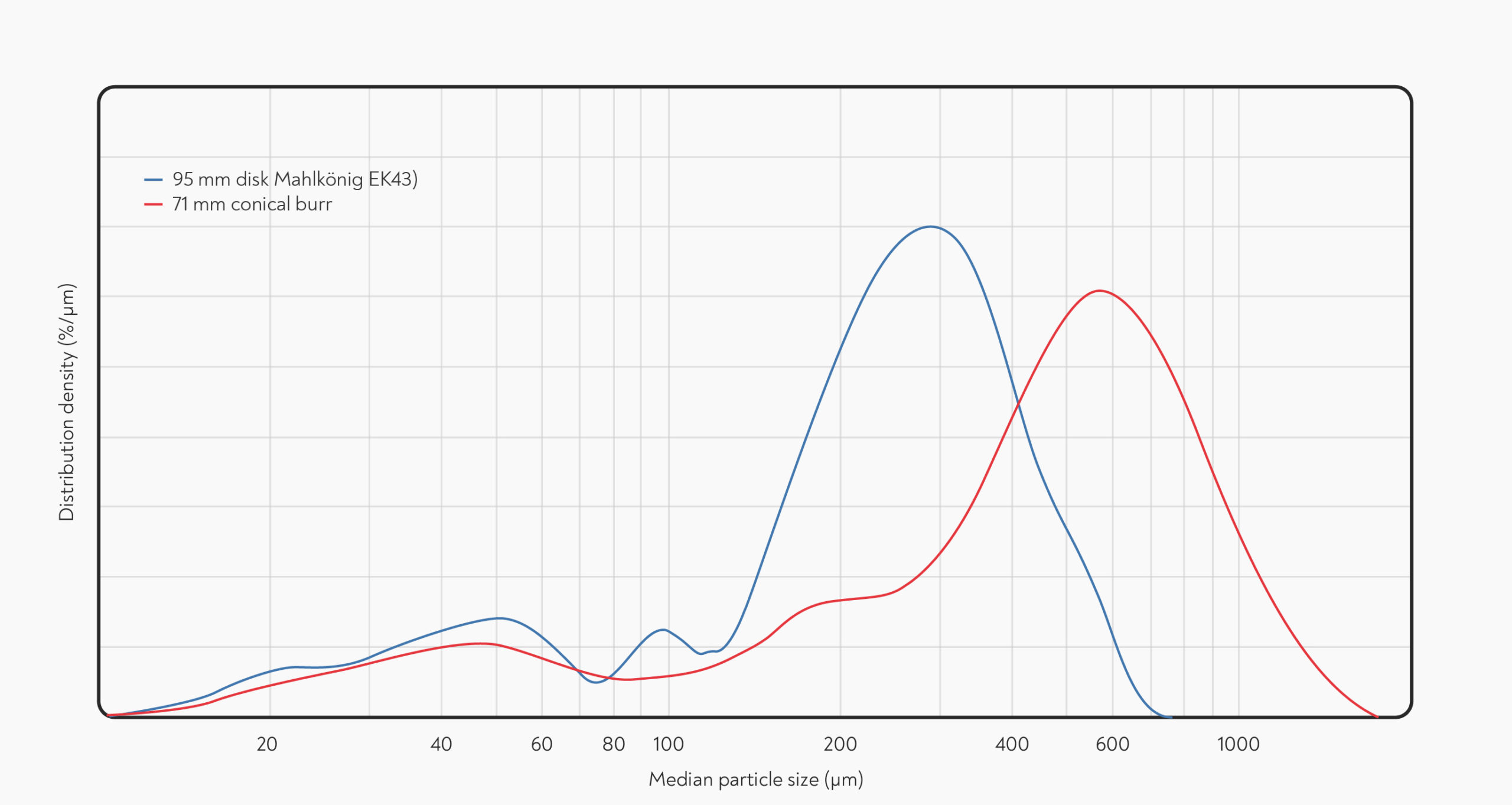To learn about coffee extraction and how to taste it, we invite you to read this Barista Hustle post.
The Specialty Coffee Association recommends an extraction yield in the range of 18–22%. This yield, based on equipment and techniques that have existed in the coffee industry since the 1950s, has become an industry standard. The standard was first established by the work of Professor E. E. Lockhart, founder of the Coffee Brewing Institute, and published in his doctoral dissertation, ‘The Soluble Solids in Beverage Coffee as an Index to Cup Quality’ (1957). In his research, Lockhart worked with batch-brewed filter coffee prepared with a coarse grind. For this reason, his findings have less relevance to immersion brew methods such as ibrik coffee that are prepared using grind settings radically different from what Lockhart used.
In recent years, we have witnessed a steady trend towards aiming for higher extractions — enabled by better equipment, better roasting, and better barista techniques. It began with the use of better grinders, such as the EK43, allowing extractions at perhaps 24% before overextraction flavours became apparent. It has continued since then as more techniques to promote even extraction have emerged.
Examine the two particle size distributions shown below. The one depicted by the [blue] line represents an extremely even distribution and a small median particle size. The one depicted by the [red] line represents a similar amount of fine particles but a much larger median particle size. If you were to prepare a cupping using both of these distributions, you would expect to find a far higher proportion of underextracted flavours coming from the distribution represented by the [red] line. You would need to extend the extraction time considerably to achieve an extraction yield similar to the one you would achieve from brewing with the distribution represented by the [blue] line.
This chart below, based on the work of Jonathan Gagne (2019), suggests how the resultant brews would end up. The blue line represents a brew prepared with a grind featuring an even distribution and a small median particle size.
